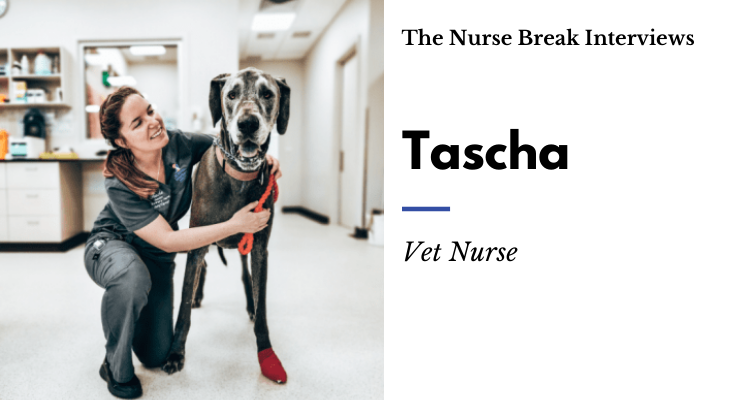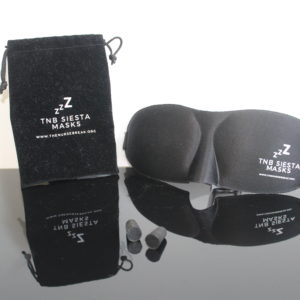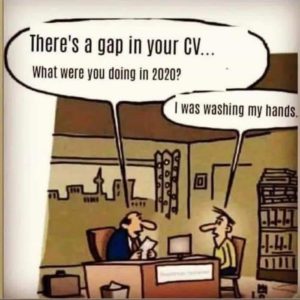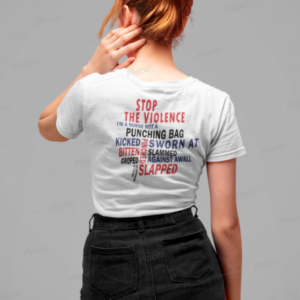Table of Contents
Meet Vet Nurse Tascha! She gives powerful insight into the world of a vet nurse
Please introduce yourself
My name is Tascha, I have been nursing for 12 years. I always wanted to work with animals since I was in primary school, at first I didn’t know which avenue I would take working with animals. From dressing up as a Park Ranger at school career day to many days spent volunteering at the zoo and wanting to be a zoo keeper or even an animal laboratory technician but then I fell in love with Veterinary Nursing. I made the decision to become a Veterinary Nurse because I was passionate about caring for sick or injured animals and I loved the fast past and varied work role.

I became a qualified Veterinary Nurse in 2010, completing a Diploma in General Practice in 2015. I also became nationally recognised by the Australian Veterinary Association as an Accredited Veterinary Nurse and has maintained unbroken accreditation since 2015. This means keeping up with a certain amount of continuing professional development hours and is the gold standard for Veterinary Nurses to uphold in practice.
Voluntary registration scheme for veterinary nurses came into position in 2019 and I was one of the first to join the scheme and become a Registered Veterinary Nurse. This is the beginning of setting a professional standard for the industry which The Veterinary Nurses Council of Australia have worked very hard towards. I’m looking forward to one day in the near future, that all nurses need to be registered to call themselves and work in the position of a Veterinary Nurse. This would be mean upholding to legislation, professional standards and continuing professional development.

What are your favourite animals?
I honestly love all animals and I always find this question difficult to answer! I work in a small animal practice which means dogs, cats, pocket pets including guinea pigs, rabbits, ferrets, rats, mice and we also work with a lot of wildlife. In my spare time I love snorkelling and free diving and have spent a lot of time swimming with sharks, whales, sea-turtles, dolphins and fish. I do have a soft spot for sea-turtles and whales. However, how can you not love big cats, they’re just so majestic or the likeness of humans and Orangutans are just incredible, they’re eyes just melt me.

Where do you currently work?
I currently work in a very busy, general practice in Tea Tree Gully. I have been working there for 10 years and I think that in itself speaks volumes about the practice and the job. Not many stay in this industry for very long as it’s so demanding physically and mentally. The colleagues I work with inspire me to be a better nurse every day.
I have previously done a lot of volunteer work in the Adelaide Zoo in the Animal Health Centre which sparked my love for Veterinary Nursing. One of my favourite memories there is carrying a bucket of food for the meerkats and they start jumping up at your legs in excitement for their feeding time.
What does a typical day look like for you as a vet nurse?
A typical day in life of a Veterinary Nurse can start of with looking after the in-patients, fixing their drip lines (as they like to tangle themselves up, chew them out or sit on them) the never-ending beeping I.V pump which I can hear in my head when its not even a work day! Walking patients so they can toilet, cleaning their soiled bedding (much better than the human kind if you ask me!), medicating and feeding. By 8 am, surgical admits start rolling in, this means working out anaesthesia plans, drug protocols that are tailored to each patient, from a Great Dane to a Dwarf rabbit.
I then perform blood drawers and run our blood tests in house to ensure they’re well pre-anaesthetic and placing intravenous catheters. Anaethetising patients, intubating, monitoring their anaesthesia, surgical preparation and ensuring their pain levels are managed are all part of my every day. These patients are then moved to our recovery section of the hospital ward and monitored closely until they’re up and standing and ready to eat, drink and walk again. I often assist the Veterinarian in surgery, scrubbing into laparotomy procedures or orthopaedic procedures, or I perform dental cleans and removal of diseased teeth, to taking radiographs, assisting with ultrasounds and endoscopy procedures.
Some days I run consults with or without the Veterinarian, this may include nutritional consults, dental consults, parasite prevention advice to neonatal care or starting off consults for the Veterinarian by collecting the history, vital signs and any pre-requisites that may be required for example blood testing or urine samples.
Most days I assist with euthanasia whether in the hospital or we do occasionally make house visits to people’s home to do this, it is sad, but it something that I believe is one the kindest things we can offer animals. To end suffering by choice when required is something I really admire about the Veterinary industry. Quite often we make an ink paw print and fur mementos which we place in a sympathy card hand written by the nurses, before prepping the patient for the cold room. We do this as well as answering phone calls, assisting with in-patients, dealing with customers and providing advice and performing drug prescriptions.

What are some of the conditions you see in your current position?
So instead of having specialised departments like the human field, in general practice you see and manage most things. From emergency situations like a snake bite envenomation to hit by car trauma injuries to dog fights, to chronic and acute illness such as pancreatitis, diabetes, Addisonian, Cushing’s disease, kidney disease and cardiac disease. To surgical cases, such as amputation, splenectomy, foreign body removals (animals like to eat silly things that aren’t meant to be eaten), lump removals. We see it all and we assist with their care in hospital, the best part is seeing a long-stay patient purring or a waggy tail being greeted by their owner on their way out of the hospital after being unwell.
What are some medications that you administer and why do you use them?
I can administer all medication prescribed by a Veterinarian, from I.V antibiotics like Metronidazole, to Ant-acids like Ompremazole, to setting up what CRIs of Fentanyl, or opioid cocktails like an MLK drip which includes, Methadone, Lignocaine, Ketamine. We can perform local and regional nerve blocks pre-surgery. Our main anaesthesia medication is called Alfaxan which I believe is not a human medication, however we do often use Propofol as well. We maintain all our patients on Isoflurane or Sevoflurane gas.

How do you physical assess different animals in your current practice?
The diversity of anatomy and physiology we need to have knowledge about is huge. From birds that have air sacs that you have to be careful when handling or administering medications, to scales of a reptile, horses, dogs and cats. The basic principles are the same, gentle, fear-free handling techniques, we assess demeanour, mentation and perform TPR (temperature, pulse, respiration), we also check blood pressure, mucous membrane colour and capillary refill time, as part of a basic vital check. Some animals require more handling than others, but we often use towels and blankets to help us assess animals, it helps provide comfort, it allows the nurses to manage their limbs, or no limbs (snakes) but overall helps us manage them wiggling.
We can wrap a grumpy cat up in what we call a ‘kitty burrito’ technique or use the towel to help shield anxious dog’s head away from the person taking a blood sample. It makes the animal feel more secure in a way that is not scary for them, for us to handle them. If they can have food for the exam, we distract them with treats, or lick mats with peanut butter, this can also help them hold still for us and be distracted whilst we take a rectal temperature etc.
How do you take ‘vitals’ on different animals?
Vital checks are very important in veterinary medicine, as animals can’t tell us when they suddenly don’t feel well. We call our check of vitals “TPR” temperature, pulse, respiration, however this just the bare minimum and we often also take blood pressure, check their mucous membrane colour and capillary refill time and oxygen saturation with a pulse oximeter.
Again, all species of animals have different ‘normal’ values, from a rabbit to a horse we ensure to always do TPR checks and alert the Veterinarian if there is anything remarkable. Crib cards are very handy in this instance as they are small cheat sheet of values for different species that we can refer too.

Discuss some of the things you do and manage that many human nurses may not realise some vet nurses do!
Veterinary Nures can perform all different procedures and tasks from, placing intravenous lines in fractious cats and aggressive dogs to tiny 1 week old, 200 gram kittens. We also routinely place urinary catheters, manage feeding tubes, chest drains, tracheostomy tubes. We can help take biopsies and exam under the microscope, we examine blood smears, ear swabs and skin swabs. We can perform a urinalysis and faecal float tests. We take blood samples from jugular veins, cephalic, saphenous and pedal veins, we can also place long term catheters and artery catheters.
Before a patient is under anaesthesia, we work out drug protocols, calculate premedications, analgesic and anaesthetic agents, we categorise their ASA score and talk to the Veterinarian about any risks involved, we then work out emergency drug calculations or any CRIs that may be needed throughout the procedure. When a patient is under anaesthesia we routinely monitor, their ECG, pulse, respiration, capnograph, temperature, blood pressure, oxygen saturation, as well as looking at the patient and assessing their mucous membrane colour, capillary refill time, eye positioning etc.
What is a misconception about being a vet nurse?
One of the biggest misconceptions is that the veterinary industry is that you get to work with animals and not people. A lot of people are drawn to working with animals as they don’t have to work with people, however this very, very wrong. Owners (people) are our biggest communicators to tell us what is going on with their pet. Pets can show us signs of being unwell and we can perform diagnostics to help us with coming to a diagnosis however nothing compares to getting a history from the owner about how the pet is going.
A large part of being a Veterinary Nurse’s role is educating owners, this can be on things such as; preventative care such as parasites, intestinal worms, heartworms, flea control to diabetes management at home for their pet, nutritional advice, dental hygiene advice, neonatal care etc.
One of the main myths or common misconceptions about Veterinary Nursing is that we’re glorified cleaners and we just ‘cuddle’ puppies and kittens! This is definitely not entirely true, yes cleaning and maintaining an aseptic hospital is vital however we also have cleaners and animal assistants that help with this, while we do more nursing work. One of the many perks is to cuddle a new kitten or puppy but our job entails so much more than this.
What are some other interesting things you have seen?
In my career as a Veterinary Nurse, I have seen all sorts of bizarre and interesting cases. From dogs that need hermaphrodite surgery to cats with oesophageal strictures to intestinal foreign bodies with all sorts of weird and wonderful things pets eats (underwear, socks, condoms, tampons, forks, glass, fishing hooks) to hit by car cases where the patient is in complete shock with broken limbs, emphysema and organ damage. We also see a lot of toxicity cases such as rat and snail bait poisoning, to snake bites, fortunately in South Australia we do not have paralysis ticks or cane toads which are both very dangerous to pets.
Some of the worst cases I’ve seen are from dog fights, where we get these dogs with half of the jaw dangling off and covered it deep, nasty bite wounds and the patient is very shocked. At my current workplace, we’re located close to the Adelaide Hills and have dealt with many wildlife as well as companion pets who have sadly been victims of bush fires. These are always distressing to see once that animal has been found and just clinging on to life.
What is one thing you wish you would have known before you became a vet nurse?
The one thing I wish I knew before entering my Veterinary Nursing career would be a lot of the ‘work’ comes from being physically working in practice. You can read, learn, do all the theory but a lot of what we do is ‘on the job’ learning. There is always something I’m still learning and I’m forever changing and upskilling myself to provide better advice to owners and being able to in turn provide better patient care.
Why should people consider being a vet nurse?
Working as a Veterinary Nurse is so damn rewarding!! It can be hard work some days, however every day you get to make a difference in an animals life and that in itself for me is enough for me. I get use my skills as an RVN and take care of the voiceless and advocate for them. Each day is so varied and you never know what the day entails exactly. There are many avenues you can take working as a Veterinary Nurse from medical nursing, surgical nursing, emergency nursing, consulting nurse to hospital manger to research worker or agriculture, I love the variation of working in a GP setting as I get to combine all these roles every day.
Veterinary health professionals and mental health?
It is sadly true, that Veterinary health professionals have been shown to be up to four times more likely to fall victim to suicide compared to other healthcare professionals such as doctors, pharmacists, dentists and nurses.
Like most people in the healthcare industry, we’re highly empathetic people and also highly motivated or perfectionists. This in itself without any pre-existing mental health illness such as anxiety or depression can be worrisome as the Veterinary industry as a whole can be very demanding, stressful and underpaid.
Combine that with stressed-out pet owners when their beloved pet is sick/injured and needing medical intervention and the knowledge of what this pet needs for the diagnosis or treatment plan and financial constraint on the owners makes doing our best to care for the patient hard.
Veterinary professionals do a lot of work for free especially with wildlife, however treatment on companion pets can be expensive when we need to perform diagnostics to help treat our patients. Veterinary hospitals do not get a support system like Medicare, the vet hospital owners have to invest money into equipment such as Xrays, anaesthetic machines, monitoring equipment, laboratory machines, microscopes, CT scanners, ventilators etc.
Despite the cost for hospital treatment, diagnostics or even vaccinations, if you break down the costs of the treatment and was actually performed it’s actually not that expensive. Due to not having Medicare, you can see what every dollar is contributing towards, so when you need X-rays performed you’re not only paying fot the X-ray but also slight up keep and helping to pay for the machinery, licences etc. This also contributes to the misconception that Veterinarians make a lot of money, a full-time Veterinarian earns from $70,000-85,000 a year and Veterinary Nurses $40,000- $50,000 AUD.
There is a current veterinary shortage in Australia and the demand for work vs Veterinarians and Veterinary Nurses is overwhelmingly high. Long hours, high demand and low salary for the amount of study to get a degree or become a RVN is also a key contributor to poor mental health.
Compassion fatigue and burnout is another major key factor to poor mental health in the veterinary industry. Kindly and sadly we part take in regular recommendations and performing euthanasia which can then also lead to being the support to the owner/family. This can be very hard to be able to perform, be the councillor (which we are not trained in) and then straight after that consult, go into a brand new puppy visit and put on a cheery face as a new family welcome their new pet into their world.
Veterinary professionals want to help your pets when in need and we feel torn when we really want to help the pet however there is no-one to pay the bill. Often we’re are told that we’re only in it for the money when it comes to treatment/diagnostic charges when an owner is financially constraint and their pet is unwell. There is only so much we can do and offer but this is very tiresome and I can’t even count how many times I’ve heard from clients that ‘we’re killing their pet’ and ‘we do not care for animals’ because there is a charge for our professional help.
These are just a few contributors to why the veterinary profession have significantly higher suicide rates and are more susceptible to depression, anxiety and burn-out.
Do vet nurses experience aggression from pet owners like hospital nurses from patients?
Like any health care professionals and nurses, Veterinarians and Veterinary Nurses are sadly accustomed to aggression or verbal abuse. Highly stressed people worried about their beloved pet that is unwell in a clinical setting with other emergencies, costs etc is always going to attribute to overwhelmed clients taking out their anger, stress on the professionals. I think all we can do is put ourselves in their shoes, be kind and clear with our communication and the process.
What pathway would you like to see the future of your profession take over the next 10 years?
I would love to see mandatory registration for Veterinary Nurses to actively practice. Currently, the scheme for registering nurses was brought out in 2019 but voluntary, this means our title is not protected. Under the current Australian legislation, there is no definition of what a Veterinary Nurse is, which means anyone can call themselves a Veterinary Nurse even if they’re not qualified and not registered.
This means that there is no regulation or statutory code of conduct and no requirement to maintain currency and uphold standards, which further more can potentially expose clients and the patients to harm and increase liability for the veterinary professionals.
By making registration mandatory means Veterinary Nurses have to behold a set of standards and raise minimum standards by keeping up to date with continuing professional development. It furthermore means that Veterinary Nurses will be accountable for professional practice and conduct, provide better protection in relation to animal health and welfare, align with international standards and safeguard the public interest and protect public health.
I’m so proud to be a Veterinary Nurse and it’s a hard job, we do so much for our patients, clients and to help out our amazing Veterinarians. We’re the backbone to the profession and making Australian Veterinary Nurses And Technicians (AVNAT) registration mandatory we can belong to a professional body that advocates for the professionalism of the Veterinary Nurse/tech. I really believe this will change soon, thanks to the incredible Veterinary Nurses Council and all who volunteers and helps make these important changes come into fruition.






You must be logged in to post a comment.